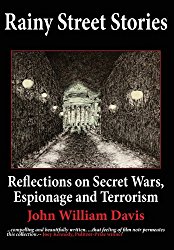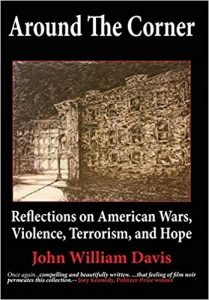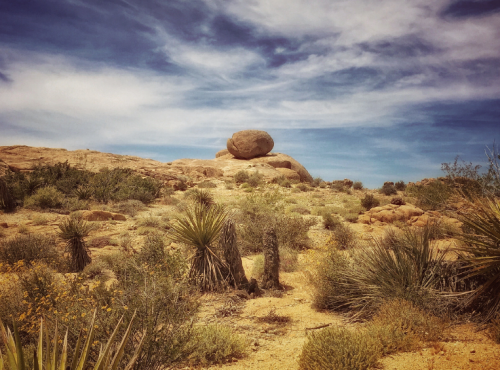Wonderful Adventures in the Old West
Article Written by John Davis
 When we lived out West my three boys, my wife Jane and I liked to go on “Mighty Adventures.” Trips to secret places, ghost towns, old forts, abandoned gold mines, and former settlements of the early pioneers and Indians were special. On all of these expeditions I took our metal detector.
When we lived out West my three boys, my wife Jane and I liked to go on “Mighty Adventures.” Trips to secret places, ghost towns, old forts, abandoned gold mines, and former settlements of the early pioneers and Indians were special. On all of these expeditions I took our metal detector.
Our great trips and discoveries live on in our family memory. Before each expedition we tried to find the best map available. Arizona published a handy “Ghost Towns of Arizona” map which generally got you where you could find the ruins of a ‘lost’ town. In California we set out on weekends to the mountains near Yosemite, or went beach checking by Monterrey Bay. I was the only one to visit Ft. Sill, Oklahoma, but we all got involved when we scrambled through the remains of Fort Bowie, or the rail town of Charleston, Arizona.
This latter place you won’t find on any map. When the railroad went away, and the water in the San Pedro River ran underground, the town just vanished. It was near Charleston that my oldest son Marty and I took a bike ride into the desert. We managed to find the largest rattle snake in the state (per our telling) one unforgettable Saturday. Marty, a few yards ahead of me, screeched to a dead halt. “Look at that SNAKE!,” Marty exclaimed.
Ahead of us was a Mohave rattler, resting himself on the lonely, dead remains of the old ’30’s highway we were on. That snake stretched from the side of the road to near to the middle. He had to have been some eight feet long! We waited until he got tired of lazing on the bare, empty roadway, and moved on into the desert. We then pumped down the old road. Charleston was a fun place to find remnants of early townspeople from a real Old West railhead with our detector. Even if you had to keep one eye open for slithering visitors!
Once I took the boys to the mountains and an abandoned gold mine near Bisbee, Arizona. We saw the ‘tailings’ from miles away, as the high desert there is beautiful with scrub growth but little else. Tailings are the rocks and refuse left outside the mine after the ‘paydirt’ has been taken out. As we drew nearer, my car axles taking a major beating on roads not used since the late 1800’s, we saw several other mine entrances, about a quarter mile in each direction.
So, with the boys, we started looking through the rocky tailings for what the old timers couldn’t have cared less about: turquoise. Sure enough, we found loads of turquoise, and chysocholla stone as well. My wife Jane would be over the moon with some of these finds, as she could make them into necklaces and brooches.
On my return to work that next Monday, my colleagues were fascinated. They wanted to go, and asked me for directions. The next weekend they were off! Imagine my surprise when I discovered they’d gone to the same mines, but found ‘bees’. “Bees?” I asked, amazed that they’d found anything living out there. “Yeah. We threw rocks in the mine shafts, and heard bees. One of us went in to see if there was honey. The ‘bees’ were the rattles of a den of rattlesnakes!” After laughing myself to death, I mentioned we’d never, ever gone into one of the mines. We’d contented ourselves with what was outside. Snakes like to cool themselves in hot weather, too.
On another bolt across the desert we found what must have been ‘Middlemarch’. Such a place was mentioned in early writings about Arizona. We even found references in several early settler records I consulted. A glance at the map showed where we could reasonably start, since it seemed to lie equidistant from Ft. Bowie and Ft. Huachuca.
We got out there to find a little no name ghost town, complete with outlines of a street. Maybe, we thought, a military ‘camp street’. So, metal detecting nearby brought us loads of military buttons, lead bullets, rifle and pistol cartridges, everything a groomsman for a horse could use, and every single metal object a cavalryman would ever need. Including hobnails for boots.
Once, on our way home through the wastelands around Tombstone, Arizona, (Yes, THAT Tombstone), we had to answer the call of nature. No facilities for miles, and but few scrub bushes were high enough for ‘coverage’. Out the boys went. When they came back, they had found a huge chunk of quartz. Shot throughout the quartz was, yes, gold!
How this treasure got there, lying all alone in the middle of a baking desert of yucca plants and scrub cholla, of course we can never, ever know. My guess is some gold miner from the 1800’s was riding back with his haul from one of the many gold mines scattered throughout the Dragoon Mountains, and it just fell off the mule.
We all tried to guess what happened on his way home to cause him to lose this treasure. Remember, the rock sat all alone in the middle of nowhere in the desert. Aliens was a favorite guess. He got robbed and they couldn’t carry it all was another. His friend stole the mule and the miner gave chase. Did I mention aliens?
We had no end of adventures. Even today we all keep trying to come up with more and more interesting things to do. What a great life.
~ ARTICLE WRITTEN BY JOHN DAVIS
Read More from John
 John William Davis is a retired US Army counterintelligence officer and linguist. As a linguist, Mr. Davis learned five languages, the better to serve in his counterintelligence jobs during some 14 years overseas. He served in West Germany, Italy, and the Netherlands during the Cold War. There he was active in investigations directed against the Communist espionage services of the Soviet Union and Warsaw Pact. His mission was also to investigate terrorists such as the Red Army Faction in Germany, the Red Brigades in Italy, and the Combatant Communist Cells (in Belgium) among a host of others.
John William Davis is a retired US Army counterintelligence officer and linguist. As a linguist, Mr. Davis learned five languages, the better to serve in his counterintelligence jobs during some 14 years overseas. He served in West Germany, Italy, and the Netherlands during the Cold War. There he was active in investigations directed against the Communist espionage services of the Soviet Union and Warsaw Pact. His mission was also to investigate terrorists such as the Red Army Faction in Germany, the Red Brigades in Italy, and the Combatant Communist Cells (in Belgium) among a host of others.
His work during the Cold War and the bitter aftermath led him to write Rainy Street Stories, ‘Reflections on Secret Wars, Terrorism, and Espionage’ . He wanted to talk about not only the events themselves, but also the moral and human aspects of the secret world as well.

And now recently published in 2018, John continued his writing with Around the Corner: Reflections on American Wars, Violence, Terrorism, and Hope.
Two powerful books worth reading.
Read more about them in the following Six Questions:
Six Questions with John Davis: Author of Rainy Street Stories


I loved your article John….. I Also love to find artifacts from the past… as far as the quartz, yep, I’d say aliens..lol
Great write up John… enjoy your future adventures… until next time… see ya
Thanks Focused! I appreciate this, and wish you many mighty adventures, too!
Your stories are always good reads, John. Thanks.